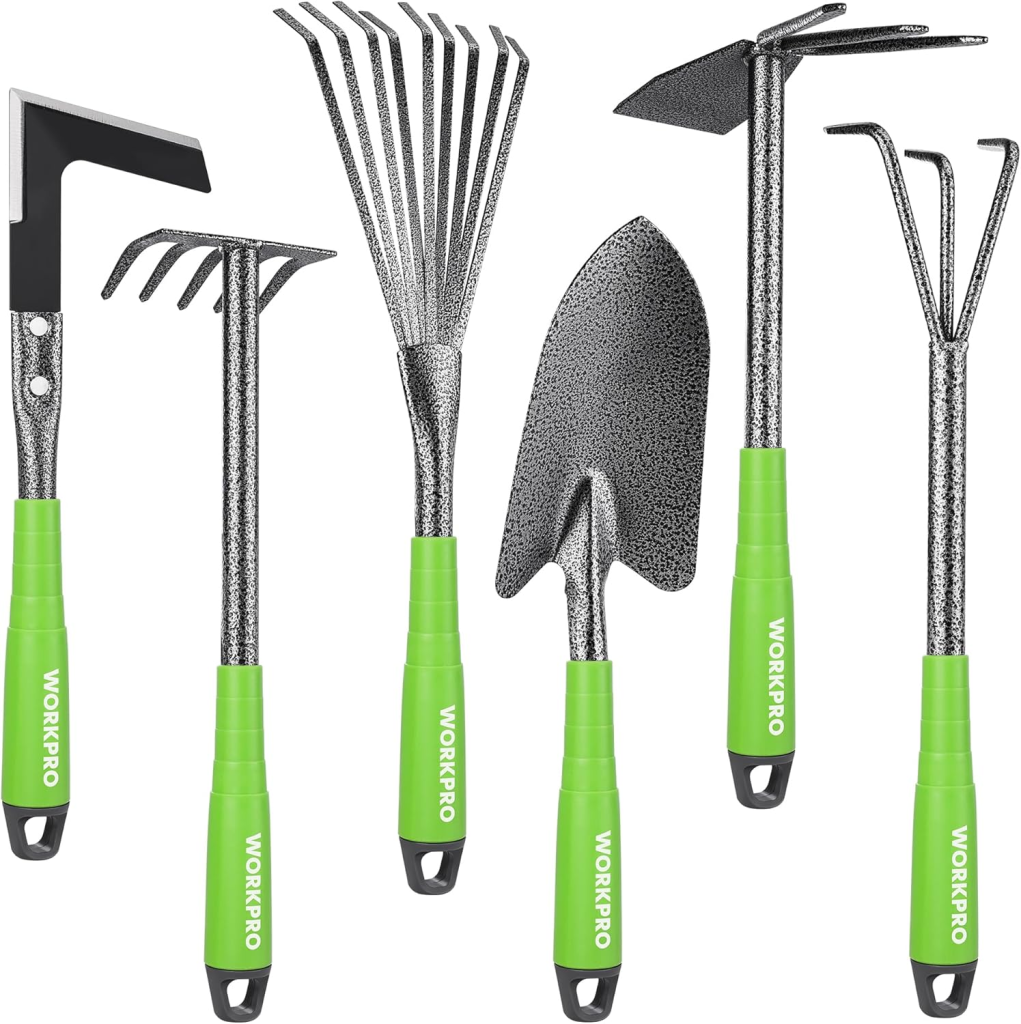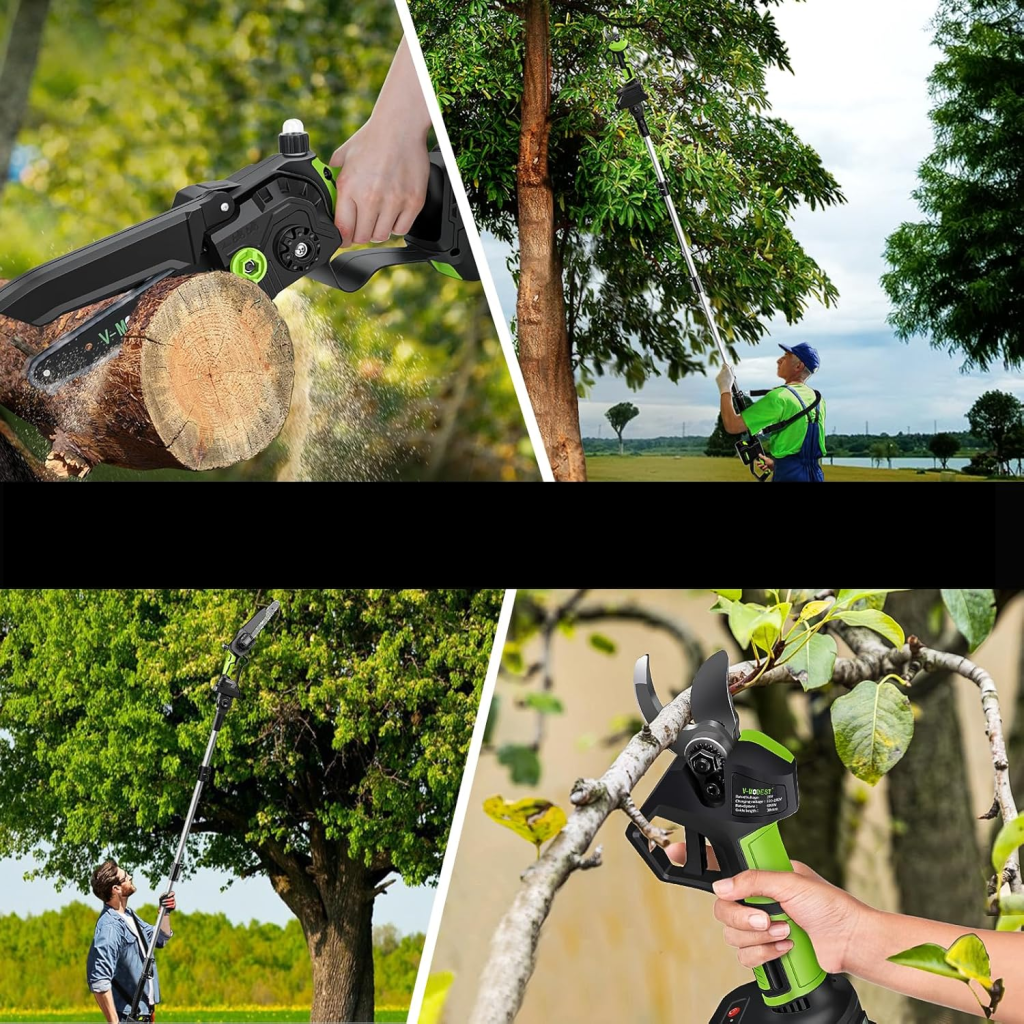A thriving flower bed starts with the right gear. The proper flower gardening tools cut cleanly and reduce tissue damage, which helps plants recover well. Think pruners for precise cuts, rakes that level beds, and trowels that set transplants with minimal disturbance to roots. With a core set of garden essentials, everyday tasks feel lighter and more consistent.
This guide lays out the best tools for flowers along with a simple starter kit of beginner gardening tools that support plant health, efficient workflows, and the kind of progress that keeps gardening enjoyable.
Getting Started: Tools Every Flower Gardener Should Own
Planting, pruning, and weekly upkeep run smoother with a tight core set of essential garden tools. This includes a hand trowel for transplanting, bypass pruners for deadheading, a sturdy rake for leveling soil, and a hoe for weeding.
Add gloves and a watering can or hose. These tools for flower beds cover digging, cutting, and cleanup without clutter. For a simple beginner gardening kit, include a spade and hand fork for turning and mixing in compost. Keep a small gardening checklist: clean blades, sharpen edges, and coil hoses after use to make gear last.
Trowel Power: Digging Deep into Daily Tasks

Heavy Duty Trowel, Rakes, 2-in-1 Hoe and Crack Weeder
Found On Amazon
A quality trowel kit covers everyday uses like digging small planting holes, loosening soil, and blending potting mix. For planting, it works as a reliable transplanting tool, helping roots settle without tearing the ball.
Choose a durable garden trowel with a stainless or carbon steel head to balance rust resistance and strength. Pair it with contoured wood or composite handles. Ergonomic gardening tools keep wrists neutral and cut strain during longer sessions.
Rake it Right: Light Soil Prep and Leaf Cleanup
A small hand rake makes quick work in tight beds. Loosen the top few inches to aerate and blend light compost, then rake the surface smooth for planting. For flower bed care, choose a mini shrub rake with narrow, flexible tines to work around stems without damage.
Use it to lift leaf litter, spent blooms, and light thatch between plants, and before seeding or transplanting for light leveling. It also excels at garden debris removal in corners and borders.
Author’s Notes: Check out our post on The Right Rake for a comprehensive guide to this absolutely essential gardening companion!
Pruning Shears: Keep Blooms in Prime Shape

Found On Amazon
A sharp pair of pruning shears keeps blooms coming and shape tidy by removing spent flowers as they fade. Deadhead by cutting just above the first set of healthy leaves. For shaping cuts, trim above an outward-facing bud to direct new growth and keep the plant open.
Use bypass garden scissors on live green stems and anvil styles on dead or woody growth. Keep blades clean and sharp and wear gloves for safe cuts. Choose plant maintenance gear that fits the hand comfortably, and reach for a compact deadheading tool on finer stems.
Author’s Notes: Check out our post on The Best Tools for Pruning and Trimming Plants for an in-depth guide to choosing the right pruning and trimming tools!
Garden Forks: For Aerating and Enriching Soil

Found On Amazon
Garden forks pull double duty as soil aeration tools and gentle root guardians. For compact beds, a 4-tine digging fork loosens deeper layers so air and water move freely, which helps new roots settle. A fork also mixes compost into the top of a bed evenly, speeding soil improvement without overworking it.
Typical gardening fork benefits include lifting perennials with less root damage and breaking up clumps before planting. Choose a sturdy compost mixing fork with forged or stainless tines and a D-handle. Use a smaller border fork for tight flower bed aeration.
Author’s Notes: Check out our Complete Guide to Aeration for tips to creating a vibrant and thriving yard!
Watering Essentials: Cans, Hoses, and Wands
Watering sets the rhythm in a flower bed. For patios and container-heavy spaces, a watering can keeps pours aimed at the soil line and avoids splashing foliage.

Found On Amazon
For bigger beds or hanging baskets, pair the garden hose with a watering wand. The long reach and gentle shower make it easy to water thoroughly while a thumb shut-off saves steps between plants.
Hand watering with a hose and wand remains a solid option alongside drip or sprinklers in shared or larger gardens. Round out your flower watering gear by matching tool capacity to garden size.
Smart Soil Management: Test Kits and Spreaders
Smart soil prep starts under the surface. A garden soil test kit shows pH and nutrients so amendments match what beds actually need.

Found On Amazon
MySoil Mail-In Labs give the most reliable recommendations, while Rapitest At-Home Kits are fine for quick pH checks before detailed work (linked below). With targets set, a flower fertilizer spreader lays down granules evenly so no plant gets too much or too little.
That uniform coverage supports consistent blooms and tightens garden nutrient management across beds. Round it out with basic soil health tools and composite sampling to keep results accurate from plot to plot.
Author’s Note: Check out the more accurate Mail-in Lab MySoil Soil Test Kit or the Convenient At-Home Rapitest Soil Test Kit for diagnosing nutrient deficiency and preparing your soil for the planting season!
Power Tools that Elevate Flower Garden Borders
Crisp borders make beds look finished. A flower bed edger cuts a clean line that keeps turf from creeping into plantings and boosts curb appeal. String trimmers are workhorse tools for shaving grass along pavers and curves, tidying what the mower misses.

FOUND ON AMAZON
As practical power tools for gardeners, both options help stop lawn overgrowth from invading beds and limit mulch spill into paths. For dependable garden maintenance equipment, use a bladed edger for sharp sidewalks and a lightweight trimmer for weekly touch-ups.
A 3-in-1 leaf blower, vacuum, mulcher combo that inhales spent mulch and weeds, keeping paths clear. Used together, these gardening power tools turn maintenance into minutes and earn a permanent spot on the shelf of must-have garden gadgets.
Keeping Things Organized: Tool Storage and Longevity
Clean tools last longer, so give them a dry, ventilated home in a garden tool shed or weather-resistant box to keep moisture off metal and handles. Hang long handles on wall hooks so edges stay off the floor and rust is less likely.
For organizing gardening tools, pegboards and labeled racks make grab-and-go simple. For outdoor tool storage, choose sealed boxes and wipe blades with a light oil film after use. Classic tool maintenance tips also include brushing off soil, drying thoroughly, and using a sand-and-oil bucket for quick cleanup between jobs.
Author’s Notes: Check out our post on Creative Garden Tool Storage Ideas for more ways to store gardening tools properly, which is key to long term maintenance.
Conclusion: Build a Blooming Garden with the Right Tools
Quality flower garden tools are the quiet backbone of a healthy bed, turning routine tasks into efficient, clean work. Choose essential garden equipment that holds an edge and fits the hand.
Sharp, well-maintained blades make cleaner cuts that reduce plant damage and disease spread. Ergonomic designs also cut down strain, which keeps time in the beds longer and more enjoyable. Keep these successful gardening tips close, build a small kit of blooming garden tools, and let the gear do the heavy lifting.
Pick a bed today, set the kit by the gate, test a fresh cut, and post progress shots in the comments below!


